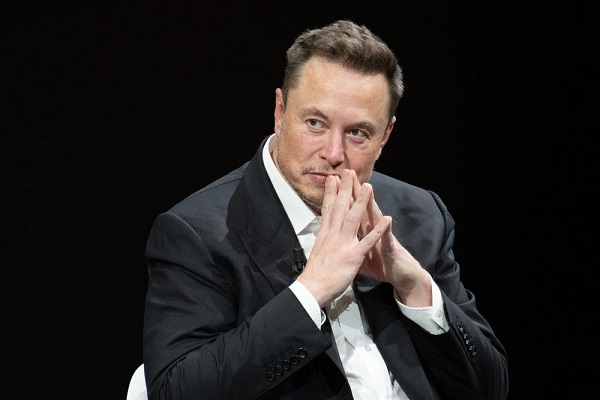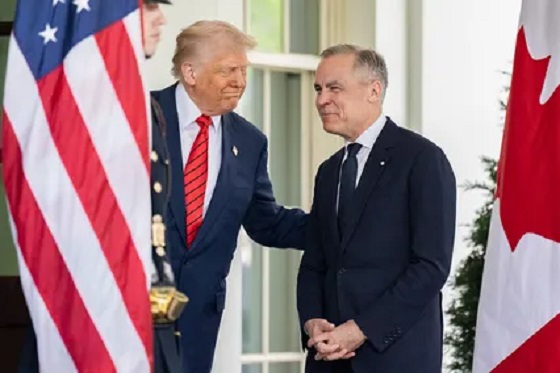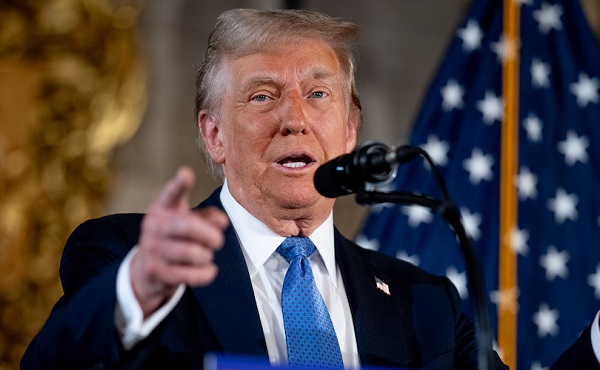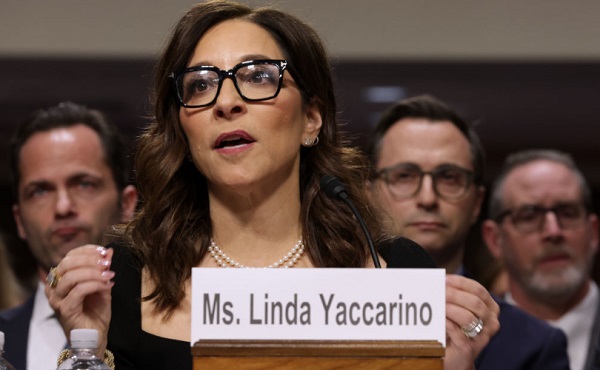Business
DOGE Theory

One of the most intriguing developments following Donald Trump’s election victory has been the announcement of Elon Musk and Vivek Ramaswamy’s Department of Government Efficiency, or DOGE. The initiative, which hopes to cut up to $2 trillion from the federal budget, has generated notable excitement, momentum, and memes. The world’s richest man and a successful biotech entrepreneur, Ramaswamy, have revitalized what seemed to be a mostly dormant libertarianism, drawing on the inspiration of Milton Friedman and promising to slash the bureaucracy to the bone. But what are its prospects for real-world success?
Elon Musk is our era’s most gifted entrepreneur, having revolutionized several industries and run multiple major companies. But the private sector operates on radically different principles than the public sector, which has a way of stalling or disarming even the most determined efforts. I foresee three potential impediments to DOGE’s success.
First is the problem of authority. While President-elect Trump has dubbed the effort the “Department of Government Efficiency,” it is not a government department at all. Rather, Musk and Ramaswamy will remain in the private sector and preside over what is, in effect, a blue-ribbon committee providing recommendations to the president and to Congress about potential cuts. In practice, though, blue-ribbon committees are often where ideas go to die. Politicians who feel the need to “do something” about a given problem often establish such committees to create the perception of action, which masks their true desire or, at least, the eventual result: inaction.
DOGE’s challenge will be to translate its recommendations into policy. It is almost certain that an entrepreneur of Musk’s ambition will not be content with writing a report. His and Ramaswamy’s task, then, is to persuade the president and the director of the Office of Management and Budget to enact real (and politically risky) cuts, and, if possible, to persuade Congress to abolish entire departments, such as the Department of Education, in the face of left-wing backlash.
The second problem for Musk and Ramaswamy is public opinion. Libertarians and small-government conservatives have long promised to reduce the size of government; one reason that they have never done so is that federal programs and agencies are generally popular. All of the major federal departments, with the exception of the IRS, the Department of Education, and the Department of Justice, have net-positive favorability numbers. Congressional members, even conservative Republicans, fear that slashing these departments would expose them to savage criticism from the Left and backlash from voters. They know that Americans complain about the size of government in theory but oppose almost all spending cuts in practice—the key paradox that libertarians have been unable to resolve.
Musk and Ramaswamy have repeatedly appealed to the work of Argentinian president Javier Milei, who has dramatically reduced the number of departments and created flashy video clips of himself stripping down organizational charts and yelling, “Afuera!” But what is possible in Argentina, which has been mired in a decades-long economic crisis, may not be achievable in the United States, which is much more stable, and, consequently, may not have the appetite for such dramatic action.
Which brings us to the problem of politics. Sending a rocket into space requires mastery over physics, but cutting government departments requires mastery over a more formidable enemy: bureaucracy. As Musk and Ramaswamy will see, the relationship between would-be reformers and Congress is vastly different from that between a CEO and a board of directors. To succeed, Musk and Ramaswamy must persuade a group of politicians, each with their own interests, to assume a high level of risk.
DOGE’s first task—identifying the budget items to cut—is the easy part. The hard part will be actually cutting them. They will have to convince Congress, which, for nearly 100 years, has refused to reduce the size of government, even when that notion had bipartisan support, as it did during the presidency of Bill Clinton, who promised that “the era of big government is over.”
This does not mean that DOGE cannot succeed. Though there may not be an appetite for a $2 trillion reduction in government spending, there is a hunger for targeted cuts that would strip the federal government of hostile ideologies that have made our institutions dysfunctional and our national life worse. For example, slashing grant funding for critical race theory would likely win support from voters; cutting the budget for USDA meat inspectors would not, and, given opportunity costs, would probably prove unproductive as well.
Perhaps the name of this committee—the Department of Government Efficiency—is also slightly off the mark. The problem is not only about efficiency, which suggests quantity, but about orientation, which implies quality. The federal government has long been captured by ideologies that misdirect its efforts. Simply making the bureaucracy more efficient will not solve that problem. DOGE must first determine what federal spending is worthwhile; from there, it can focus on creating “efficiencies.”
I hope that Musk and Ramaswamy can dispel my pessimism. Political realities have stifled countless reform efforts before now, and DOGE is an enterprise that would be difficult, if not impossible, under normal circumstances. But these are two remarkably talented men; if anyone is capable of shattering the mold, they can.
Please share your ideas, dissents, and thoughts in the comments. In the next newsletter, we will feature the best material in a“comment of the week” section. In the meantime, have a wonderful Thanksgiving.
Business
Trump confirms 35% tariff on Canada, warns more could come

Quick Hit:
President Trump on Thursday confirmed a sweeping new 35% tariff on Canadian imports starting August 1, citing Canada’s failure to curb fentanyl trafficking and retaliatory trade actions.
Key Details:
- In a letter to Canadian Prime Minister Mark Carney, Trump said the new 35% levy is in response to Canada’s “financial retaliation” and its inability to stop fentanyl from reaching the U.S.
- Trump emphasized that Canadian businesses that relocate manufacturing to the U.S. will be exempt and promised expedited approvals for such moves.
- The administration has already notified 23 countries of impending tariffs following the expiration of a 90-day negotiation window under Trump’s “Liberation Day” trade policy.
Diving Deeper:
President Trump escalated his tariff strategy on Thursday, formally announcing a 35% duty on all Canadian imports effective August 1. The move follows what Trump described as a breakdown in trade cooperation and a failure by Canada to address its role in the U.S. fentanyl crisis.
“It is a Great Honor for me to send you this letter in that it demonstrates the strength and commitment of our Trading Relationship,” Trump wrote to Prime Minister Mark Carney. He added that the tariff response comes after Canada “financially retaliated” against the U.S. rather than working to resolve the flow of fentanyl across the northern border.
Trump’s letter made clear the tariff will apply broadly, separate from any existing sector-specific levies, and included a warning that “goods transshipped to evade this higher Tariff will be subject to that higher Tariff.” The president also hinted that further retaliation from Canada could push rates even higher.
However, Trump left the door open for possible revisions. “If Canada works with me to stop the flow of Fentanyl, we will, perhaps, consider an adjustment to this letter,” he said, adding that tariffs “may be modified, upward or downward, depending on our relationship.”
Canadian companies that move operations to the U.S. would be exempt, Trump said, noting his administration “will do everything possible to get approvals quickly, professionally, and routinely — In other words, in a matter of weeks.”
The U.S. traded over $762 billion in goods with Canada in 2024, with a trade deficit of $63.3 billion, a figure Trump called a “major threat” to both the economy and national security.
Speaking with NBC News on Thursday, Trump suggested even broader tariff hikes are coming, floating the idea of a 15% or 20% blanket rate on all imports. “We’re just going to say all of the remaining countries are going to pay,” he told Meet the Press moderator Kristen Welker, adding that “the tariffs have been very well-received” and noting that the stock market had hit new highs that day.
The Canadian announcement is part of a broader global tariff rollout. In recent days, Trump has notified at least 23 countries of new levies and revealed a separate 50% tariff on copper imports.
“Not everybody has to get a letter,” Trump said when asked if other leaders would be formally notified. “You know that. We’re just setting our tariffs.”
Business
Trump slaps Brazil with tariffs over social media censorship

From LifeSiteNews
By Dan Frieth
In his letter dated July 9, 2025, addressed to President Luiz Inácio Lula da Silva, Trump ties new U.S. trade measures directly to Brazilian censorship.
U.S. President Donald Trump has launched a fierce rebuke of Brazil’s moves to silence American-run social media platforms, particularly Rumble and X.
In his letter dated July 9, 2025, addressed to President Luiz Inácio Lula da Silva, Trump ties new U.S. trade measures directly to Brazilian censorship.
He calls attention to “SECRET and UNLAWFUL Censorship Orders to U.S. Social Media platforms,” pointing out that Brazil’s Supreme Court has been “threatening them with Millions of Dollars in Fines and Eviction from the Brazilian Social Media market.”


Trump warns that these actions are “due in part to Brazil’s insidious attacks on Free Elections, and the fundamental Free Speech Rights of Americans,” and states: “starting on August 1, 2025, we will charge Brazil a Tariff of 50% on any and all Brazilian products sent into the United States, separate from all Sectoral Tariffs.” He also adds that “Goods transshipped to evade this 50% Tariff will be subject to that higher Tariff.”
Brazil’s crackdown has targeted Rumble after it refused to comply with orders to block the account of Allan dos Santos, a Brazilian streamer living in the United States.
On February 21, 2025, Justice Alexandre de Moraes ordered Rumble’s suspension for non‑compliance, saying it failed “to comply with court orders.”
Earlier, from August to October 2024, Moraes had similarly ordered a nationwide block on X.
The court directed ISPs to suspend access and imposed fines after the platform refused to designate a legal representative and remove certain accounts.
Elon Musk responded: “Free speech is the bedrock of democracy and an unelected pseudo‑judge in Brazil is destroying it for political purposes.”
By linking censorship actions, particularly those targeting Rumble and X, to U.S. trade policy, Trump’s letter asserts that Brazil’s judiciary has moved into the arena of foreign policy and economic consequences.
The tariffs, he makes clear, are meant, at least in part, as a response to Brazil’s suppression of American free speech.
Trump’s decision to impose tariffs on Brazil for censoring American platforms may also serve as a clear signal to the European Union, which is advancing similar regulatory efforts under the guise of “disinformation” and “online safety.”
With the EU’s Digital Services Act and proposed “hate speech” legislation expanding government authority over content moderation, American companies face mounting pressure to comply with vague and sweeping takedown demands.
By framing censorship as a violation of U.S. free speech rights and linking it to trade consequences, Trump is effectively warning that any foreign attempt to suppress American voices or platforms could trigger similar economic retaliation.
Reprinted with permission from Reclaim The Net.
-

 International2 days ago
International2 days agoSecret Service suspends six agents nearly a year after Trump assassination attempt
-

 Bruce Dowbiggin1 day ago
Bruce Dowbiggin1 day agoThe Covid 19 Disaster: When Do We Get The Apologies?
-

 Crime19 hours ago
Crime19 hours agoSweeping Boston Indictment Points to Vast Chinese Narco-Smuggling and Illegal Alien Labor Plot via Mexican Border
-

 Alberta1 day ago
Alberta1 day agoAlberta school boards required to meet new standards for school library materials with regard to sexual content
-

 Business2 days ago
Business2 days agoWEF-linked Linda Yaccarino to step down as CEO of X
-

 Automotive2 days ago
Automotive2 days agoAmerica’s EV Industry Must Now Compete On A Level Playing Field
-

 Environment19 hours ago
Environment19 hours agoEPA releases report on chemtrails, climate manipulation
-

 Business2 days ago
Business2 days ago‘Experts’ Warned Free Markets Would Ruin Argentina — Looks Like They Were Dead Wrong




